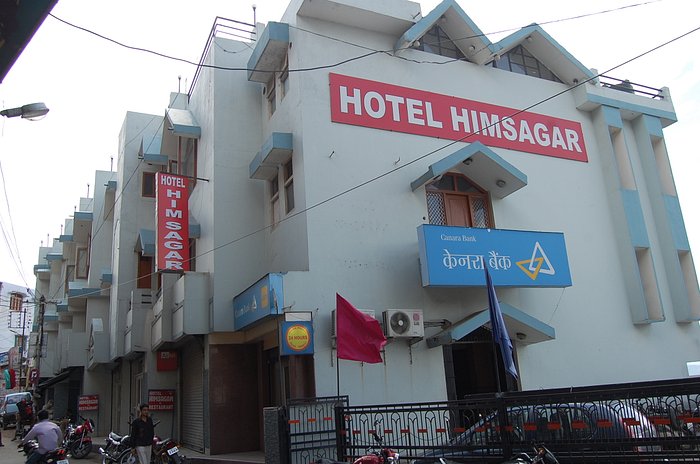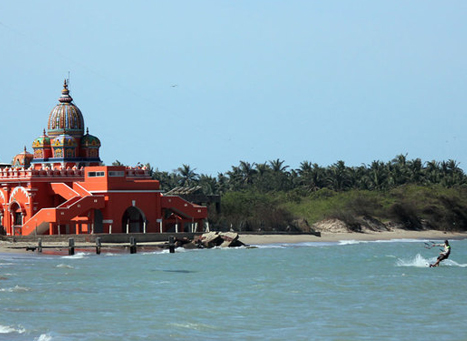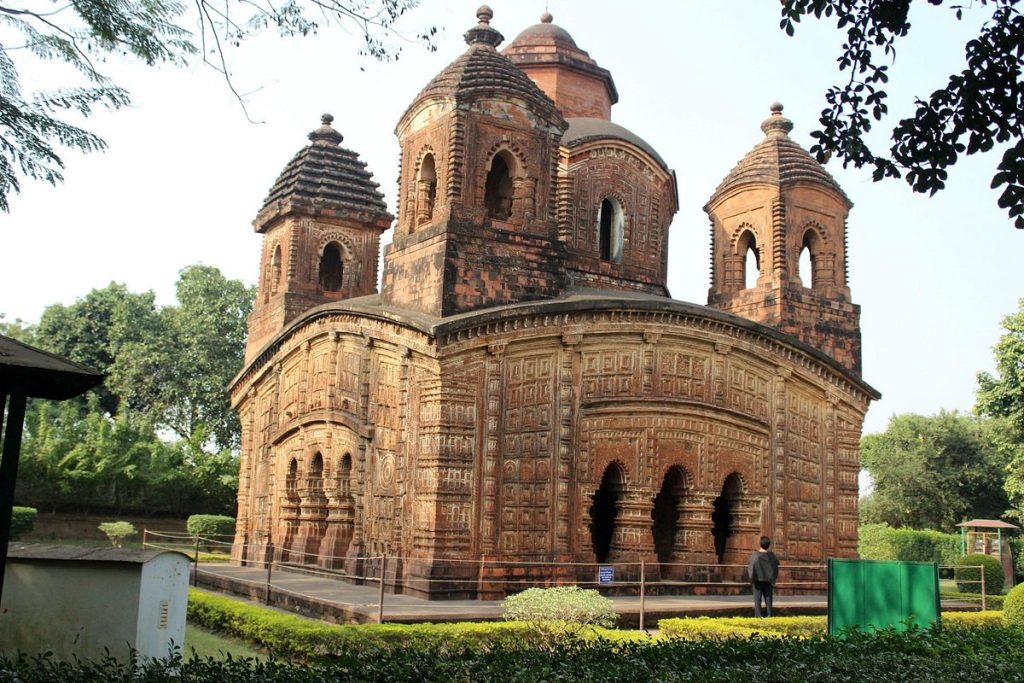Shyamrai Temple is a stunning example of ancient architecture. It stands proudly in Bishnupur, West Bengal.
Built in the 17th century, Shyamrai Temple, also known as Pancha Ratna Temple, showcases exquisite terracotta carvings that tell stories of Lord Krishna’s life. This historical gem was constructed by King Raghunath Singha and is celebrated for its unique design featuring five pinnacles.
The temple’s intricate artwork and rich history attract visitors from all over the world. Exploring Shyamrai Temple offers a glimpse into the cultural and religious heritage of Bengal. Whether you are a history enthusiast or a curious traveler, this temple is a must-visit to experience the grandeur of ancient Indian craftsmanship. Join us as we delve into the fascinating details of Shyamrai Temple.
Historical Background
The Shyamrai Temple, also known as the Panchchura Temple, is a significant historical monument. Located in Bishnupur, West Bengal, it stands as a testament to the region’s rich cultural heritage.
Origins And Patronage
Built in 1643 by King Raghunath Singha, the Shyamrai Temple reflects the grandeur of the Malla dynasty. The king was a great patron of art and architecture. His reign saw the construction of many temples, including this one. Dedicated to Lord Krishna, the temple showcases the religious devotion of the Malla kings. They played a vital role in the cultural development of Bishnupur.
Architectural Influence
The Shyamrai Temple is famous for its unique architectural style. It features the traditional Bengali hut-like roof. This style is known as the “Chala” architecture. The temple’s structure includes five towers, giving it the name Panchchura. Intricate terracotta carvings adorn its walls. These carvings depict scenes from Hindu epics like the Ramayana and Mahabharata. The use of terracotta is a hallmark of Bishnupur’s temple architecture. This makes the Shyamrai Temple an architectural marvel.
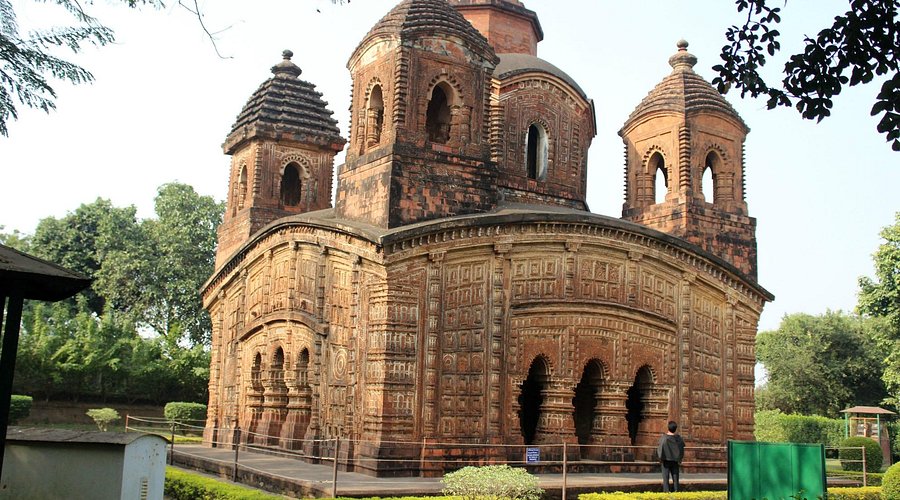
Credit: www.tripadvisor.com
Architectural Splendor
The Shyamrai Temple stands as a testament to ancient architectural brilliance. It showcases intricate designs and awe-inspiring craftsmanship. Each detail tells a unique story. Visitors are often left in awe by its beauty.
Terracotta Artistry
The terracotta artistry at Shyamrai Temple is simply mesmerizing. The temple walls are adorned with intricate terracotta panels. These panels depict scenes from mythology and everyday life. Each panel is a piece of art. The artisans paid great attention to detail. The terracotta work remains well-preserved, showcasing the skill of ancient craftsmen.
Structural Design
The structural design of Shyamrai Temple is equally impressive. The temple follows a traditional Bengali style. It features five pinnacles, creating a unique visual appeal. The central pinnacle is the highest, surrounded by four smaller ones. This design creates a symmetrical look. The temple stands on a raised platform, adding to its grandeur. The use of bricks and terracotta tiles adds to the temple’s charm.
Cultural Significance
Shyamrai Temple holds deep cultural significance in Bishnupur, West Bengal. Its intricate terracotta carvings depict stories from Hindu mythology. The temple showcases the rich heritage and artistic excellence of the region.
## Cultural Significance The Shyamrai Temple, nestled in the heart of Bishnupur, West Bengal, is more than just an architectural marvel. It is a living testament to the region’s rich cultural tapestry, a place where history, religion, and everyday life beautifully intertwine. When you step into the temple, you don’t just see the intricately carved terracotta panels; you feel the centuries-old traditions that have shaped the local community. This cultural significance is what makes Shyamrai Temple a cherished landmark. ###Religious Importance
The Shyamrai Temple is a cornerstone of religious life in Bishnupur. Dedicated to Lord Krishna, it is a place where spirituality and daily life seamlessly blend. You can feel the divine energy as soon as you enter. Devotees often share stories of their spiritual experiences here, making the temple not just a place of worship but a sanctuary for the soul. The temple’s walls, adorned with scenes from the life of Krishna, provide a visual journey through sacred lore. Each carving tells a story, inviting you to delve deeper into the religious significance of the site. ###Festivals And Rituals
Festivals breathe life into the Shyamrai Temple, making it a focal point for community gatherings and celebrations. During Janmashtami, the temple becomes a hive of activity. Devotees gather in large numbers, singing bhajans and performing dances that recount the life of Krishna. You can see the temple adorned with flowers and lights, creating a spectacle that is both beautiful and spiritually uplifting. The rituals are performed with great devotion, and the air is filled with the aroma of incense and the sound of ringing bells. Have you ever wondered how participating in these rituals could deepen your understanding of a culture? Experiencing these festivals firsthand offers you a unique insight into the local traditions and values. It’s a chance to see how faith and festivity coexist, creating a sense of unity and belonging among the people. ###Personal Experience
Visiting Shyamrai Temple during a festival is an experience like no other. The community’s warmth and the grandeur of the celebrations leave a lasting impression. You might find yourself joining a group of locals in a spontaneous dance or sharing prasad with a stranger who quickly becomes a friend. These moments of connection are what make the Shyamrai Temple truly special. In essence, the Shyamrai Temple is not just a relic of the past. It’s a living, breathing part of the community that continues to play a vital role in the cultural and spiritual lives of the people of Bishnupur. If you ever find yourself in West Bengal, a visit to this temple is a journey through history, spirituality, and community that you won’t want to miss.
Credit: www.tripadvisor.com
Artistic Masterpieces
Shyamrai Temple, a gem in Bishnupur, stands as a testament to artistic brilliance. Built in the 17th century, it showcases the pinnacle of terracotta craftsmanship. This temple, dedicated to Lord Krishna, is a visual feast for art lovers. The intricate designs and detailed iconography are awe-inspiring.
Intricate Carvings
The temple walls boast intricate carvings that depict various scenes. These carvings tell tales from the epics, showcasing the artisans’ skill. Each panel is a story in itself, capturing moments in stunning detail. The craftsmanship is so fine that it feels almost lifelike.
Flowers, animals, and mythological figures come alive in these carvings. The precision in the detailing is remarkable. Every element is carved with attention, making the temple a true masterpiece. These carvings not only beautify the temple but also narrate its rich history.
Iconography
Iconography in Shyamrai Temple is both diverse and profound. The temple features numerous icons of deities and mythological scenes. Each icon has a specific meaning and significance. Lord Krishna, the principal deity, is depicted in various forms.
The icons also include other gods and goddesses, each with unique attributes. The placement and design of these icons follow traditional rules. This iconography serves as a visual guide to the temple’s spiritual essence. Observing these icons provides a deeper understanding of the culture and beliefs.
Preservation Efforts
The Shyamrai Temple, an iconic structure located in Bishnupur, India, stands as a testament to the architectural brilliance of the Malla dynasty. However, preserving this heritage site is no easy feat. The temple faces numerous threats, ranging from environmental damage to human neglect. Let’s explore the preservation efforts in place to save this historical gem.
Conservation Challenges
Shyamrai Temple, like many ancient structures, faces a multitude of conservation challenges. The weather is a significant enemy. Heavy rains and extreme temperatures contribute to the wear and tear of the temple’s terracotta walls. Additionally, air pollution accelerates the decay process, eroding the intricate carvings that make the temple unique.
Human activities also pose threats. Unregulated tourism can lead to physical damage. Visitors may inadvertently harm the structure, and littering can degrade the surroundings. Neglect and lack of awareness exacerbate these issues, making conservation even more challenging.
Moreover, funding is often limited. Preservation requires substantial financial resources, and competing priorities can divert attention from heritage sites. How can we balance development with the need to protect our cultural legacy?
Restoration Projects
To tackle these challenges, several restoration projects are underway. The Archaeological Survey of India (ASI) plays a crucial role in these efforts. They have implemented plans to repair and stabilize the structure, ensuring that the temple remains standing for future generations.
Local communities have also stepped up. Awareness campaigns educate people about the importance of preserving the Shyamrai Temple. Schools and organizations often conduct clean-up drives, showing that even small actions can make a big difference.
Modern technology aids these projects. For example, 3D scanning allows experts to create detailed models of the temple. These models help in planning precise restoration activities. They also serve as a digital record, preserving the temple’s details even if the physical structure deteriorates.
One memorable visit to Shyamrai Temple left me in awe of the restoration efforts. Seeing the intricate carvings being carefully cleaned and restored was inspiring. It made me realize the dedication and hard work involved in preserving such treasures.
What can you do to contribute to these efforts? Respect the site during visits, support local initiatives, and spread awareness about the importance of preserving our heritage. Every little bit helps in safeguarding the Shyamrai Temple for future generations.
Tourism And Accessibility
The Shyamrai Temple, a marvel of terracotta architecture, attracts many tourists each year. Its intricate designs and rich history make it a must-visit destination. Understanding its tourism and accessibility can help you plan your visit better.
Visiting Hours
The Shyamrai Temple welcomes visitors throughout the week. It opens its doors at 9 AM and closes at 5 PM. These hours allow plenty of time to explore the temple and its surroundings. Arriving early ensures a peaceful visit without the crowds.
Guided Tours
Guided tours are available for those who want detailed insights. Expert guides share the temple’s history and architectural details. They also answer questions to enhance your understanding. Booking a guided tour can be done on-site or online. These tours usually last about an hour.
Local Economy
Shyamrai Temple boosts the local economy by attracting tourists. Visitors often spend on local goods and services, benefiting the community.
The Shyamrai Temple, a splendid example of terracotta architecture, stands proudly in Bishnupur. Its presence significantly boosts the local economy. The temple attracts numerous tourists, generating income and employment opportunities for the residents. Let’s explore how the temple impacts the local economy through handicrafts and tourism.Handicrafts And Souvenirs
Local artisans thrive thanks to the influx of visitors. They create unique handicrafts, showcasing traditional craftsmanship. Tourists buy these items as souvenirs, boosting sales. The demand for handmade goods provides a steady income for many families. This support ensures the continuation of age-old craft traditions.Economic Impact Of Tourism
Tourism brings considerable economic benefits to Bishnupur. Visitors spend money on accommodation, food, and local services. This spending helps small businesses and vendors. The increased revenue leads to better infrastructure and facilities. The presence of tourists also creates numerous job opportunities. Local guides, shop owners, and service providers all benefit from this steady stream of visitors. The economic ripple effect touches almost every aspect of local life.Future Prospects
Shyamrai Temple holds significant historical and architectural value. Future prospects include increased tourism and conservation efforts to preserve its rich heritage. The temple may become a focal point for cultural education and community events.
The Shyamrai Temple, a remarkable example of terracotta architecture, offers a fascinating glimpse into the past. But what does the future hold for this historic site? By focusing on sustainable tourism and community involvement, we can ensure the Shyamrai Temple continues to be a cherished landmark for generations to come.Sustainable Tourism
Sustainable tourism is essential for preserving the Shyamrai Temple. When you visit, consider how you can minimize your impact. Opt for eco-friendly travel options. Use public transport or carpool to reduce your carbon footprint. Respect the site by not littering and refraining from touching delicate structures. Local authorities can introduce guided tours that emphasize the temple’s history and the importance of preservation. These tours can educate visitors, fostering a sense of responsibility and appreciation. Imagine if every tourist planted a tree in the vicinity. Tree-planting initiatives can be organized, contributing to the local environment and reminding visitors of their role in conservation.Community Involvement
The local community is the heart of the Shyamrai Temple. Involving them in preservation efforts is crucial. Local artisans can be encouraged to create and sell traditional crafts near the temple. This not only boosts the local economy but also keeps traditional crafts alive. You can contribute by purchasing these unique souvenirs. Educational programs can be developed to teach local children about their heritage. When local youth understand and appreciate their history, they are more likely to protect it. Imagine a local child guiding you through the temple, sharing stories they’ve learned from their grandparents. Local residents can also be trained as temple guardians. These guardians can monitor the site, ensuring that visitors respect the rules and the environment. They can share their personal stories, adding a rich layer of local culture to your visit. Volunteer opportunities can be created for those who wish to contribute more actively. Imagine spending a day helping to clean and maintain the temple grounds, knowing that your efforts help preserve this treasure for future visitors. The future of Shyamrai Temple is in our hands. By focusing on sustainable tourism and involving the community, we can ensure that this magnificent structure continues to inspire awe and wonder. How will you contribute to its preservation?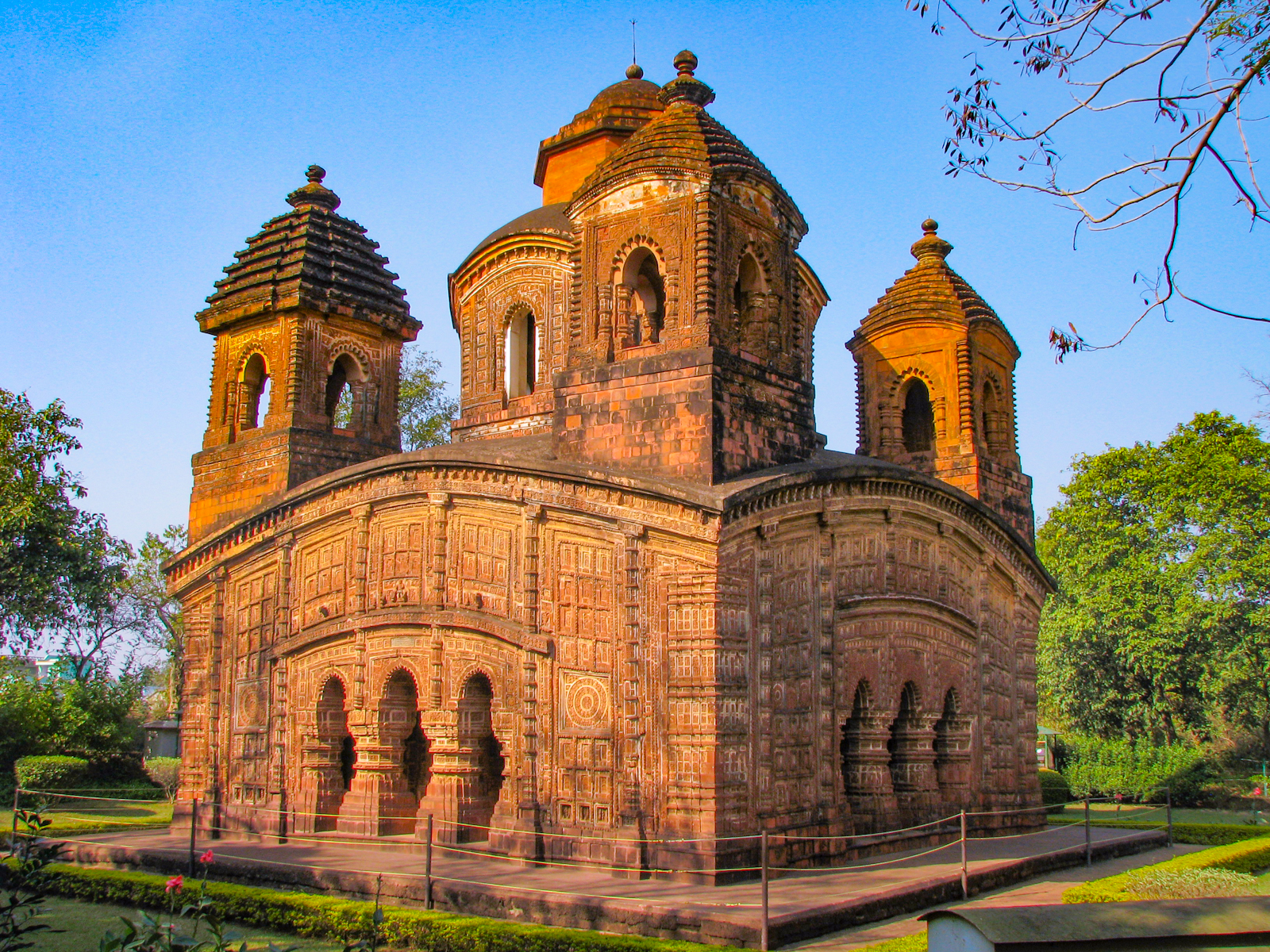
Credit: commons.wikimedia.org
Frequently Asked Questions
What Is The History Of Shyam Rai Temple?
Shyam Rai Temple, built in 1643, is located in Bishnupur, West Bengal. It features stunning terracotta architecture and intricate carvings. The temple is dedicated to Lord Krishna and showcases Bengal’s rich heritage.
Which Is The Oldest Temple In West Bengal?
The oldest temple in West Bengal is the Shiva temple in Baidyapur, dating back to the Gupta period. It features ancient architectural designs.
Where Is The Famous Terracotta Temple?
The famous terracotta temple is located in Bishnupur, West Bengal, India. Known for its intricate terracotta artwork, it attracts many visitors.
What Are The Architectural Features Of Shyam Rai Temple?
The Shyam Rai Temple features ornate terracotta carvings, a distinctive pancha ratna design, and five shikharas. The temple has intricate sculptures and elaborate decorations on its walls and pillars.
Conclusion
Shyamrai Temple offers a glimpse into rich history and stunning architecture. Every visit to this temple creates lasting memories. It stands as a testament to cultural heritage. Exploring Shyamrai Temple is a journey through time. Its intricate designs captivate every visitor.
The temple’s beauty and history draw people from around the world. Plan a visit to experience its charm firsthand. This remarkable site is a must-see for history enthusiasts. Discover Shyamrai Temple and its enchanting allure today.
{ “@context”: “https://schema.org”, “@type”: “FAQPage”, “mainEntity”: [ { “@type”: “Question”, “name”: “What is the history of Shyam Rai temple?”, “acceptedAnswer”: { “@type”: “Answer”, “text”: “Shyam Rai Temple, built in 1643, is located in Bishnupur, West Bengal. It features stunning terracotta architecture and intricate carvings. The temple is dedicated to Lord Krishna and showcases Bengal’s rich heritage.” } } , { “@type”: “Question”, “name”: “Which is the oldest temple in West Bengal?”, “acceptedAnswer”: { “@type”: “Answer”, “text”: “The oldest temple in West Bengal is the Shiva temple in Baidyapur, dating back to the Gupta period. It features ancient architectural designs.” } } , { “@type”: “Question”, “name”: “Where is the famous terracotta temple?”, “acceptedAnswer”: { “@type”: “Answer”, “text”: “The famous terracotta temple is located in Bishnupur, West Bengal, India. Known for its intricate terracotta artwork, it attracts many visitors.” } } , { “@type”: “Question”, “name”: “What are the architectural features of Shyam Rai temple?”, “acceptedAnswer”: { “@type”: “Answer”, “text”: “The Shyam Rai Temple features ornate terracotta carvings, a distinctive pancha ratna design, and five shikharas. The temple has intricate sculptures and elaborate decorations on its walls and pillars.” } } ] }

